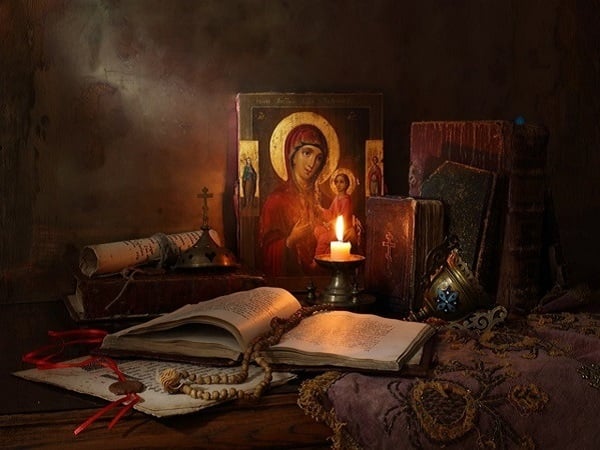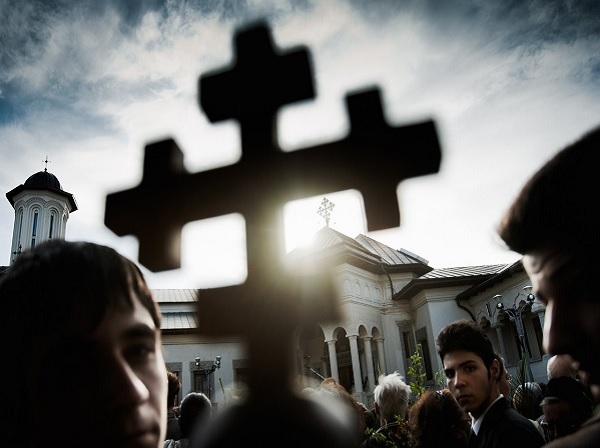The Unceasing Endeavour for Real Life
26 January 2018The spiritual life, concerning which there has been much discussion, is simply what we do, in conjunction with God’s Grace, in order to achieve the aim of our existence, which is glorification.
The spiritual life is a dynamic course of action. It begins with baptism, which is the purification of the image, and continues, by way of the ascetic life, until we reach the likeness, communion with God. In the Church, the spiritual life isn’t abstract or theoretical, but is rather union of Christians with God and our communion with Him, the life in Christ. It’s the unceasing endeavor on our part to become worthy of that divine breath which is within us, as Saint Nikolaj Velimirović so aptly puts it.

And it’s experienced in practice only within the life of the Church, and so the spiritual life is the ecclesiastical life. This life within the Church is expressed in two ways (the monastic and the lay), both of which, however, have a common root, a common progression and a common aim. This shouldn’t surprise us, because in the life of the Church there were never two Gospels: one for monastics and the other for Christians living in the world. There’s only one Gospel and therefore only one life to which the good news is preached, though monastics experience it differently from the laity. Though always within the Church.
Through the spiritual life, we seek our gradual perfection and within this framework, we can discern the common features of the two ways to which we referred above. Withdrawal into the wilderness doesn’t mean flight from the world, but from the worldly, the secular outlook, so that the people in question can devote themselves to the spiritual struggle. The action of the monastics doesn’t indicate opposition to lay Christians, nor, as Professor Mantzaridis has pointed out, can it be considered a fragmentation of the Christian life. Even the intensification [of their life] doesn’t mean opposition, but is more of a liturgical function within a united whole.
To make the common ascetic efforts of monastics and lay people even more obvious, we might mention Saint Gregory Palamas’ observation concerning the link between the virtues and promises of the monastic and the life of lay Christians. In the place of poverty, the holy Father places the rejection of the desire for riches. Instead of obedience, the avoidance of vain undertakings and the cultivation of humility, and finally, in the place of chastity, avoidance of the sensual life. So whether people are monastics, clergy or lay Christians, they’re all called to the same spiritual arena in this life on earth, in the expectation of life eternal.

The aim of the spiritual life is our liberation from the bonds of sin. Through the ascetic struggle and by the Grace of the Holy Spirit, we try to combat the passions and to cleanse and illumine our mind. According to the Fathers, there’s no division between the monastic and the married life. Although they do, indeed, presuppose different behaviours, in practice, they’re still based on the same theology of the Kingdom of God and, therefore, on the same spirituality, as Fr. John Meyendorff has demonstrated.
By reading the lives of the saints and elders, we can discern the ideal characteristics of the monastic life, which can easily become arrows in the spiritual quiver of the faithful, showing the path to sanctification, deification by Grace. Asceticism is a component part of the life in Christ, showing us our place in the Church as eucharistic and worshipping beings, nourished by the Word of God and bringing sanctity into our blighted space and time.
In the figures of the saints, theory encounters experience, Orthodoxy [right thinking] meets Orthopraxy [right doing] and through our contact with them, we Christians take on and apply what’s necessary to our everyday lives, so thatour corrupt will can then be directed by the proper will of God.
It seems that people today have abandoned themselves to their weaknesses, which has meant that they’re lost in their daily routine and have forgotten the aim and meaning of real life. The teaching of the desert fathers provides us with the opportunity to return to the proper path and to discover our purpose. In the world, with the life offered them by the Church, Christians can be cured of their passions, can accept faithfulness to God, can look forward to their salvation and their union with God, and, in the end, can acquire glorification, as a gift.
The spiritual life therefore means that people who live in Christ manifest Him every day through the way in which they behave in the world. Christians experience Christ in a natural manner, not by imitation (like Pharisees). This isn’t always easy, but it’s not unattainable. They live only for God and with Him and this is reflected in their relationships with others, with their neighbour. They experience that which the saints have lived and which constitutes the beginning, end and substance of the spiritual life.






